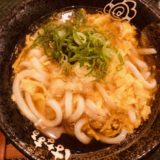This blog introduces recipes and shops that used dashi soup .
However, as I was looking for events like seminars and study sessions so that I would like to know more about dashi soup , I discovered that there is an event called " dashi soup Sommelier Training Course".
Let's better understand about dashi soup.
And you may get acquainted with those who are interested in dashi soup .
So I took this course in 1/30 (Wednesday) .
I attended " dashi soup Sommelier Class 3 Course" this time.
The tuition fee is 18,800 yen (tax included), although I think that it will lead to the future. So I paid immediately.
The place is known as Salt maker called "Ako no Ama-shio"Ama-shio's Studio @ Shinjukuis.
About 10 people including me participated on this day, but men are the only staff and I.
It is a start of tension while being surrounded by women.
As a lecturer, "Mrs. Yoshiko Maehara" is "dashi soup sommelier", a teacher of cooking who is qualified to teach in this course.
Not only dashi soup but it seems to be active in various other cooking classes.
I would like to chronologically track the content of this course.
1. Self Introduction
First of all, there are self-introductions of each lecturer and participant.
There were various people who attended.
- Those interested in dashi soup and want to know more about it
- Those who are invited by the students and are interested in participating in half of their interests
- Those who would like to cook using dashi soup for everyday dishes at home
- Those who want to take sommelier's qualification and make use of it for work
Their occupation is half of housewives and housework helpers.
The other half who are in business and those working in the kitchen are the other half.
Some people came from distant such as Chiba and Nagano, and I was interested in various people.
I think that the dashi soup related events and study sessions do not exist so much in the world, so it is the impression that those who began to investigate wanting to know about dashi soup are attending.
Actually, it is the same with me.
Everyone seemed to have insight about dashi soup , but in the meaning of knowledge and experience, there was no such thing that the level of the students was too different due to the similar impression.
2. Explanation about " dashi soup sommelier training course"
Next is the basic explanation of this course itself.
First of all, in this dashi soup sommelier class 3 course,
- Basic knowledge about dashi soup and umami
- To know various kinds of dashi soup
I will come in.
And after the third grade is over, we can proceed to second grade and first grade.
In the second grade, the ingredients manufacturers such as kelp dashi soup lectures.
In the first grade, the transition of Japanese eating habit based on dashi soup and practice in cooking.
It seems to learn that.
On this day, I first take the "third grade".
3. General knowledge of dashi soup
From here we will enter into fundamental lecture.
Even if it says a lecture, do not worry because it is not hard.
dashi soup is the basis of japanese cooking.
The dish means that it is composed of base dashi soup , ingredients, seasoning.
dashi soup and seasoning tend to be caught confused but it is different thing.
Furthermore, as types of dashi soup , there are "Independently taken dashi soup " and "Naturally taken dashi soup "
There are not only kelp and bonito but also western bouillon and chicken straws of Chinese cuisine in the former.
The latter refers to dashi soup taken directly from ingredients, such as pot dishes, boiled dishes, stir-fried foods.
So far as it is basic knowledge, it seems that students are quite familiar with it.
4. Tasting dashi soup
Well, here is the interesting part of this course.
I actually try out various dashi soup , and I will correct what dashi soup is.
As shown in this picture, six types of dashi soup are prepared in the cup,
I will correct what each dashi soup is.

The dashi soup of this time was the following six types.
- Bonito
- kelp
- Hon-dashi (Scientifically formulated dashi soup)
- Shiitake
- dried sardine
- Bezbros
This was quite interesting.
To compare what kind of taste difference there is actually by arranging all kinds of dashi soup like this, it is troublesome at home.
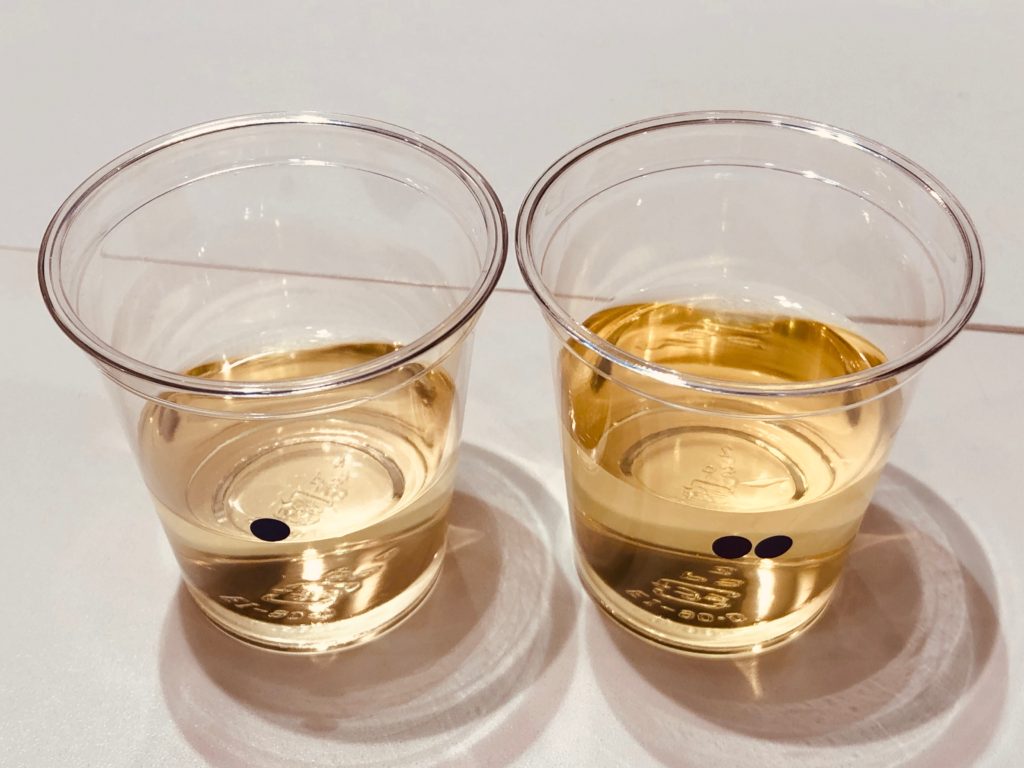
Actually tasting, you can understand the difference between each dashi soup .
Everyone of the students seemed to know clearly the difference between them, and everyone knew a correct answer.
However, the interesting thing is that the taste preferences of the students were divided.
For example, "at his home in miso soup dried sardine those who are used to" usually is, still dried sardine of the dashi soup was as favorite.
Those who like dashi soup bonito or sour taste with saltiness, like the taste "sourness" in the first place.
Truly the taste is various.
Even the same Japanese people think that it is a difference in the taste born by the different taste experienced by the region and the family.
By the way, I thought the most delicious is "Hon-dashi" (laughs).
I am sure that I grew up with Ajinomoto ^ ^;
And this umami caused by this dashi soup is one of "five flavors" of physiological taste, each of which is divided into the following three umami ingredients.
- Glutamic acid: kelp, vegetables
- Inosinic acid: bonito, dried sardine , meat, fish
- Guanylic acid: dried shiitake mushrooms, other mushrooms
And these three amino acids each have a synergistic effect.
To felt "Hon-dashi" is the most delicious is the result of being born in a synergistic effect contains various umami component.
It is not a poverty tongue at all (laugh)
5. Tasting blend of dashi soup
And from this point I will further experience the difference of dashi soup of each kind.
- Kelp; Ma-Kombu and Hidaka-Kombu
- Bonito: only bonito dashi flakes and mixed flakes
- Dried sardine : single-ended sardines and dried flying fish
- Dried shiitake mushroom
As mentioned above, even if kelp is kelp, I will experience the difference between "Ma-Kombu" and "Hidaka-Kombu".
I am surprised that the taste depends on the type even in the same kelp.

↑ The appearance does not change very much, but "Ma-Kombu" is elegant and refreshing taste. "Hidaka Kombu" felt a little rough and the scent of the ocean.
While experiencing the difference in taste, we will learn the manufacturing process of each dashi soup , knowledge(nutrition, how to choice, preservation method) etc.
After all the way, you can try blending each dashi soup and experience the synergistic effect of umami.
When blending, you can also add soy sauce and salt and enjoy freely.
Again, it is magic of "kelp + bonito + soy sauce" that I realize also here.
When glutamic acid and inosinic acid are combined, there is a theory that umami will be 7 times, but by adding soy sauce there, the umami will further double.
6. Taking dashi soup
Come now, this is practice.
I actually take dashi soup .
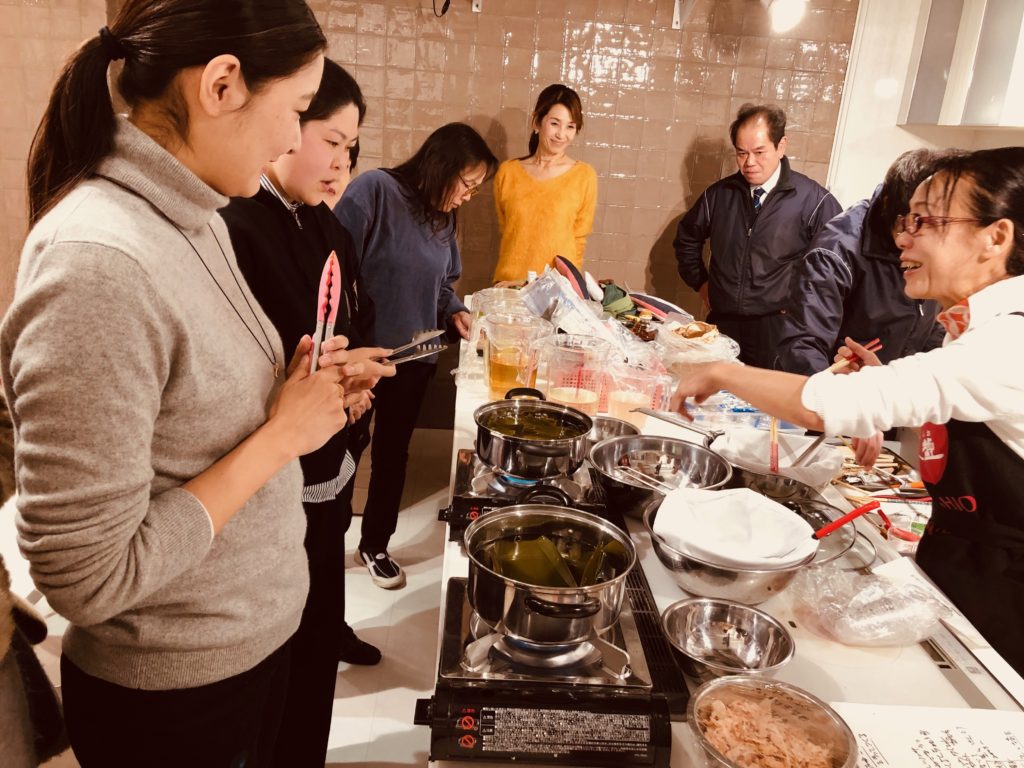
On this day I took two sorts of dashi soup .
One is kelp + bonito.
Another is kelp + dried sardine .
We take first dashi soup with this ingredients.

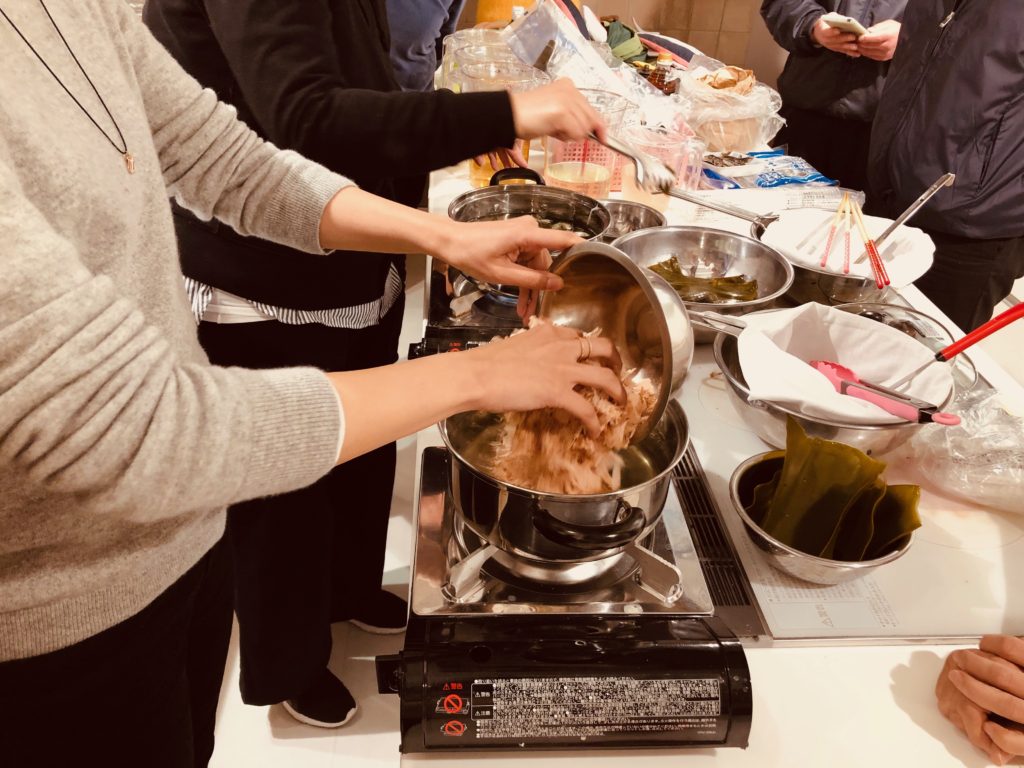

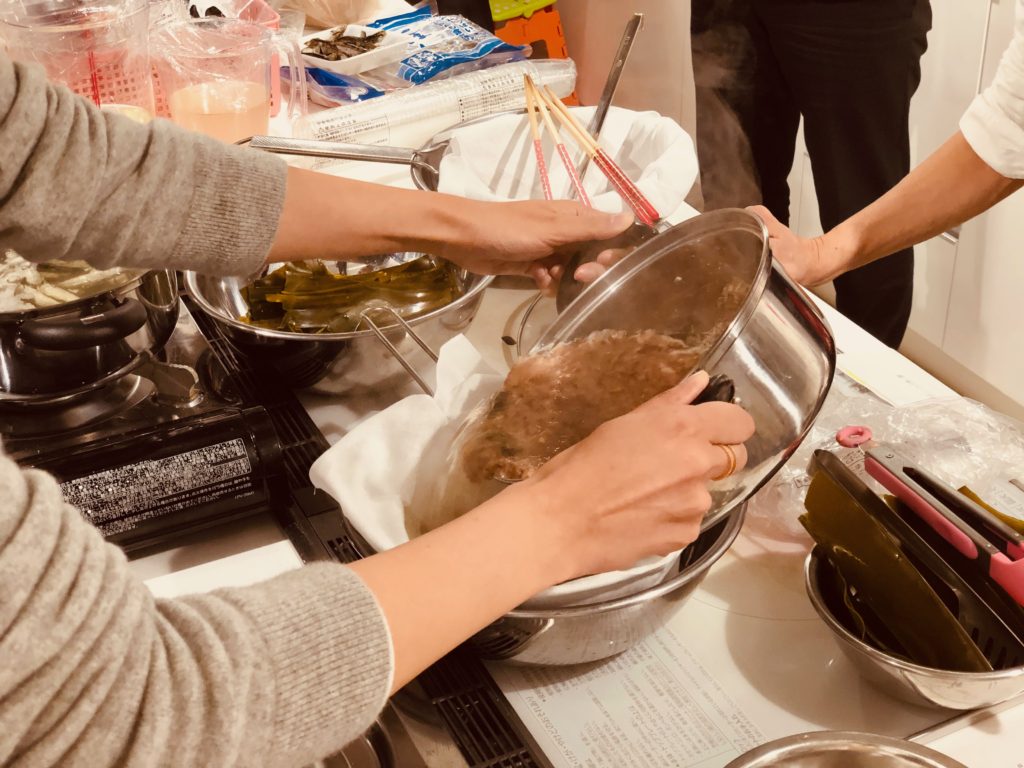
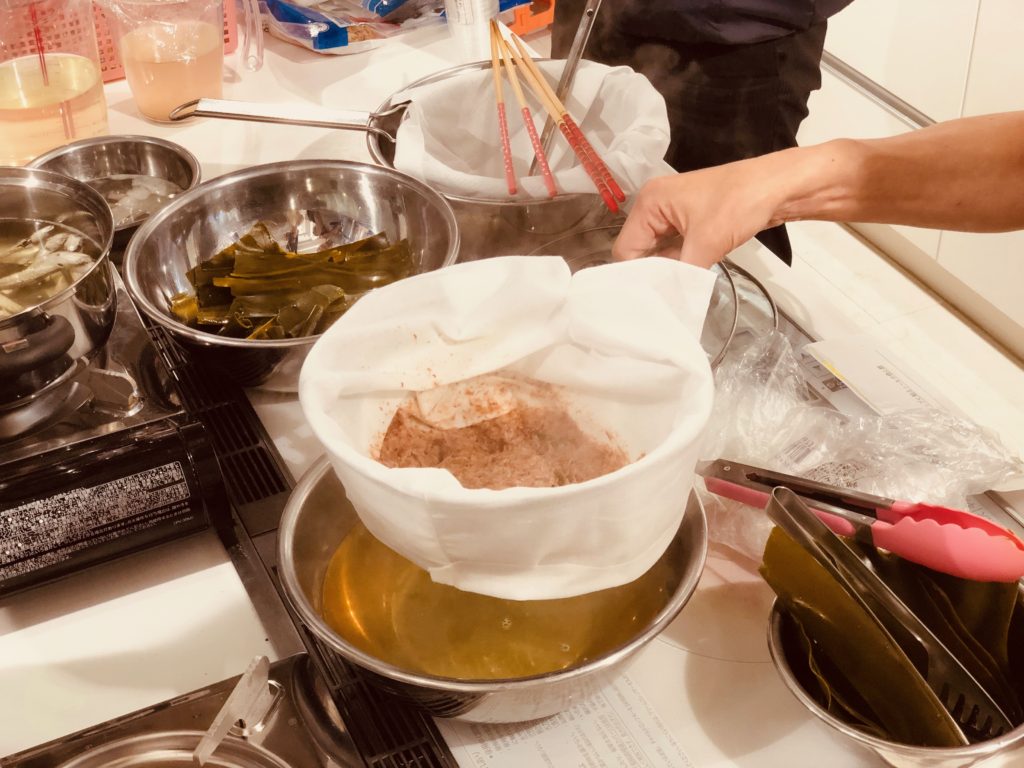
Mrs.Maehara explained as a basic method of way of dashi soup. What remained in my mind was "There are various methods not to have a correct way to do dashi soup ".
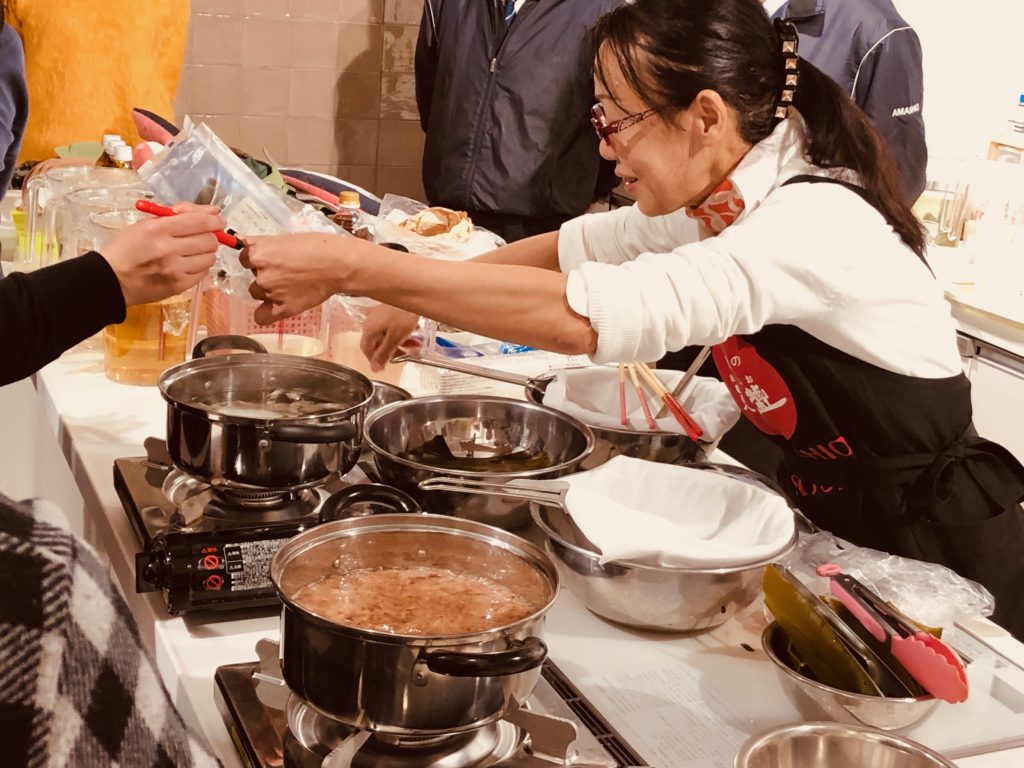 ↑ Lecture by Mrs.Maehara's dashi soup stocking
↑ Lecture by Mrs.Maehara's dashi soup stocking
The way of taking dashi soup depends on the area, shops and families.
It is okay with the idea that you can take delicious soup in a way that is easy to do and tasty.
I also sympathize with this way of thinking.
Once dashi soup has taken, I will taste it with miso.

The teacher prepared various types of miso.
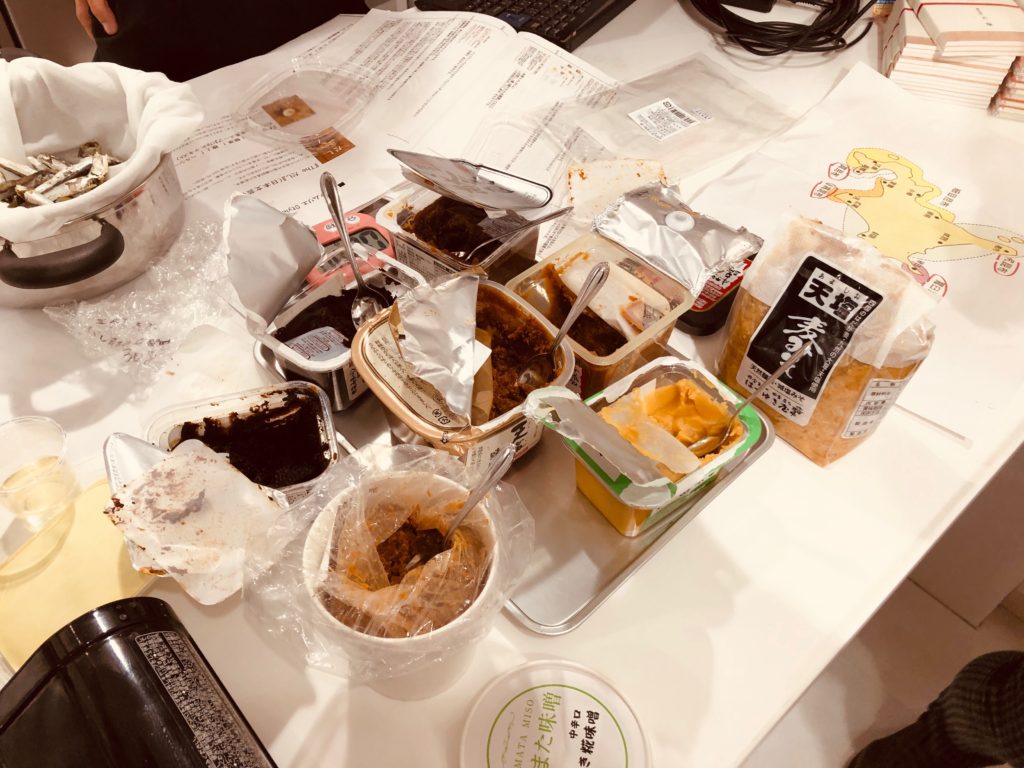
The combination of dashi soup and miso makes the taste quite different.
Even if it says the same miso soup, there are thousands of taste combinations.
About miso soup, people accept only the familiar taste, but as there are so many kinds of taste, I would like to have a lot of miso soup.
Even so, thanks to the teacher and Ama-shio for these ingredients, such as kelp and bonito also very high class.

7. Award certificate of "dashi soup sommelier" certification
Finally, there is a conviction of the end certificate of "dashi soup sommelier class 3".
And, everyone gathered together a photograph of the completion of the certificate.
This completes the whole process.
Before going home, Ama-shio who offered the place today gave us souvenirs such as kelp.
Ama-shio san, thank you very much.
When it was over, everyone returned home, but I was more happy if we could talk a little bit.
At first, I was fortunate to know what other students are interested in at dashi soup by introducing themselves, but I wanted to ask a few more stories.
And I will be able to call myself "dashi soup sommelier".
I am happy with the feeling that I got a title.

When viewed throughout the course, there was not much secular scientific content.
It is a lecture that you can learn very fun, as it has experienced contents such as taste soup and trying to make it.
The tuition fee is a little expensive to attend.
However, it will prepare very nice ingredients and it will be a great way to learn dashi soup while doing a good experience.
This is a very good experience when considering a long life.
So I think that you can take it with just a little interest if you do not put your shoulder elbow.
That's why I think that it's fun to spread my own cooking world.
As myself, I want to spread dashi soup to people other than Japan.
So I'd like to use what I learned here and the title "dashi soup sommelier", and I would like to engage in more active and disseminating information.
Again, thank you teachers Mrs. Maehara and staff of Ten-shio Studio staff!
Next is 2nd grade!

